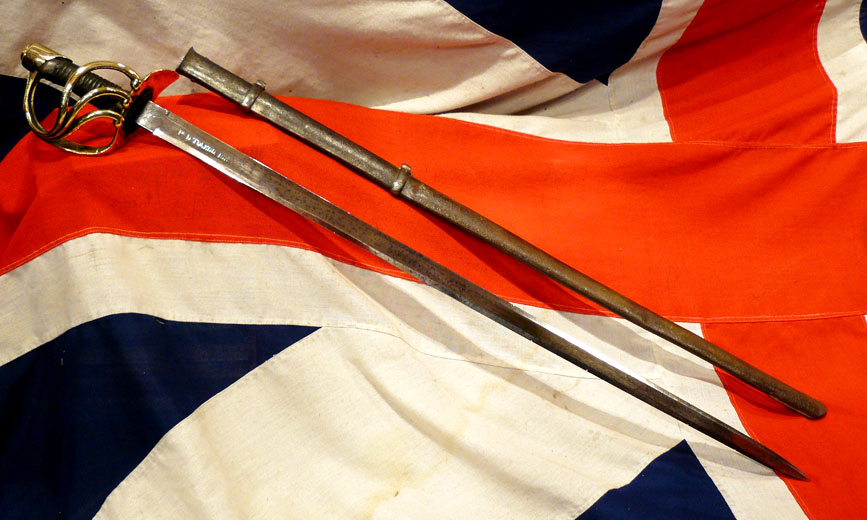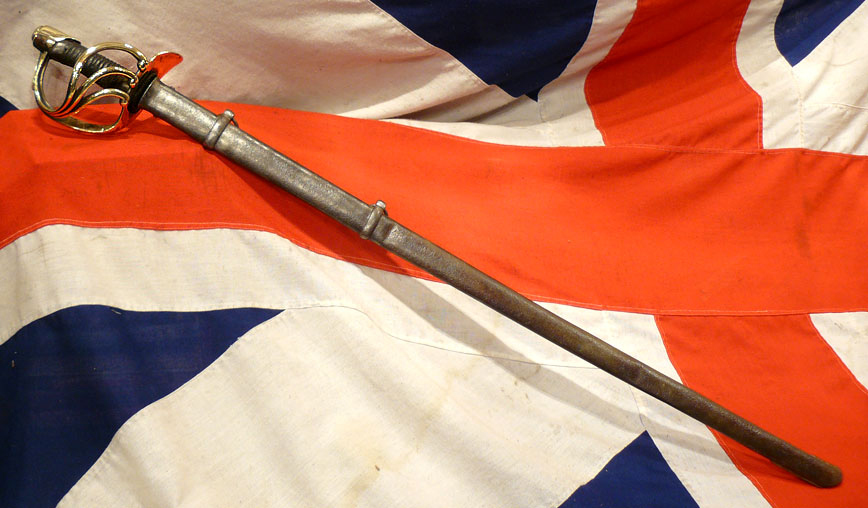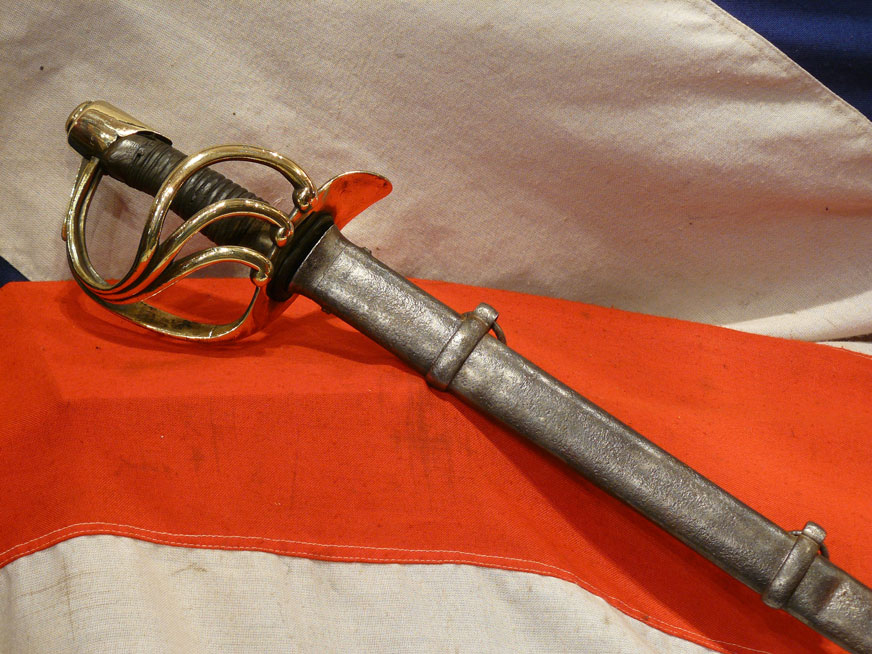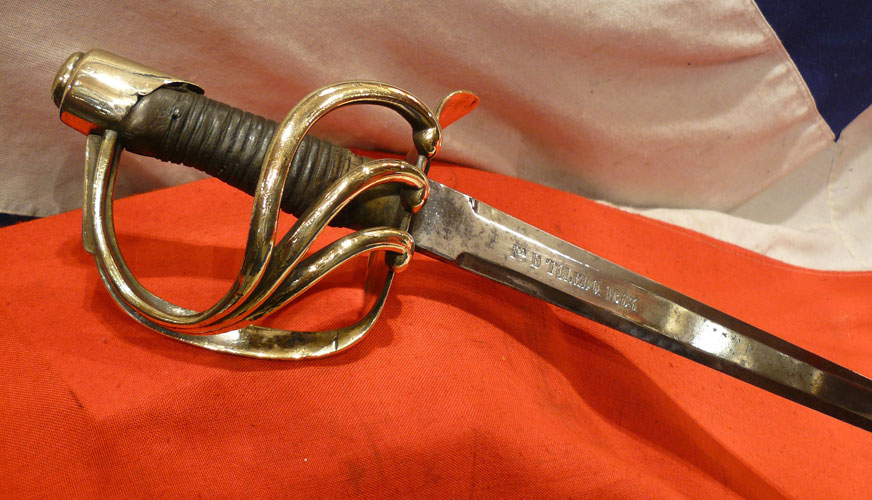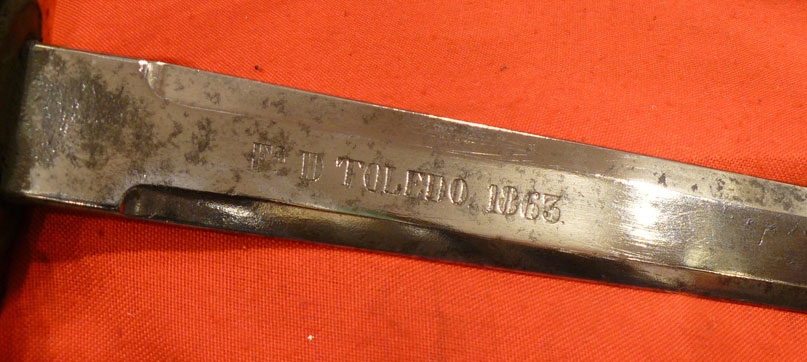A 19th Century Napoleonic Pattern, Spanish Dragoons, Heavy Cavalry of the Line Sword
In the Napoleonic wars the Spanish heavy line cavalry troopers were equipped with this pattern of sword, based on the French cuirassiers sword, having a hilt of the French heavy cavalry Cuirassiers, An XI pattern, in brass, with knuckle-bow, three curved quillons and pommel. Later this was regularised to create the model 1832 pattern. This sword's blade is maker marked, Toledo 1863. This sword has certainly seen service and evidence of combat use. This is a big, scarce Napoleonic pattern Cuirassier battle sword, and a most impressive and fascinating example, and the first of it's kind we have seen in nearly 10 years, These huge and impressive original 19th century Spanish heavy cavalry swords are very rarely seen to survive and this is a very impressive piece. The Cavalry Regiment El Rey (Spanish: Regimiento de Caballera El Rey is the oldest cavalry regiment in the Spanish Army, distinguishing itself on several occasions during the Peninsular War. They are known bestn for there charge at the Battle of Talavera where they dealt the decissive blow against General Jean Francois Leval's German Division. The Cavalry Regiment El Rey is Spain's oldest cavalry regiment, founded in 1538 under the reign of King Charles I of Spain, and as such bore the title The King's in the Spanish Army. During the Napoleonic era it was considered as one of the best Spanish regiments and it distinguished itself during the Spanish War of Independence, frequently being commented as performing very well in those years. In 1807 the regiment was assigned to Marques de la Romana's Division of the North. In 1808 it joined the fight against France after evacuating from Denmark.
Upon arrival in Cantabria the cavalrymen marched to Extremadura where they were to collect horses, thus avoiding the defeat that fell upon Romana's division at Espinosa de los Monteros. In 1809 the regiment would see much action while serving in Gregorio Garcia de la Cuesta y Fernandez de Celis' Army of Extremadura, as part of General Jose de Henestrosa's 1st Cavalry Division. It would fight at the Battle of Talavera, where they captured four French cannons and would be highly praised in Cuesta's report. During the Spanish War of Independence the unit wore a blue coat with scarlet cuffs, collar, lapels, turnbacks, gold piping and buff breeches. Like all regiments at the start of the Peninsular War they wore a red plume on their hat to show their loyalty to the Bourbon monarch, Ferdinand VII of Spain, instead of the "hated foreigner" Joseph Bonaparte. In 1870 the regiment wore a blue coatee with scarlet cuffs, collar and lapels, white turnbacks, and yellow piping and had brass buttons, they also wore blue breeches. The troopers wore a black bi-corn hat with gold lace and a red cockade with a gold cockade loop.
In 1898 the regiment had a uniform of a light blue dolman with black Austrian loops and white metal buttons; red collar and cuffs, and red trousers with a light blue stripe. They had also, after the Napoleonic Wars adopted the use of a cuirass and helmet, of steel with brass ornamentation. However, in the colonies of Cuba, Puerto Rico, Guam, the Las Carolinas Islands and the Philippines they wore the Rayadillo colonial uniform with red collar and cuffs and Leopoldina shakos with the Spanish red and yellow cockade 95 cm blade
Code: 22097
935.00 GBP

